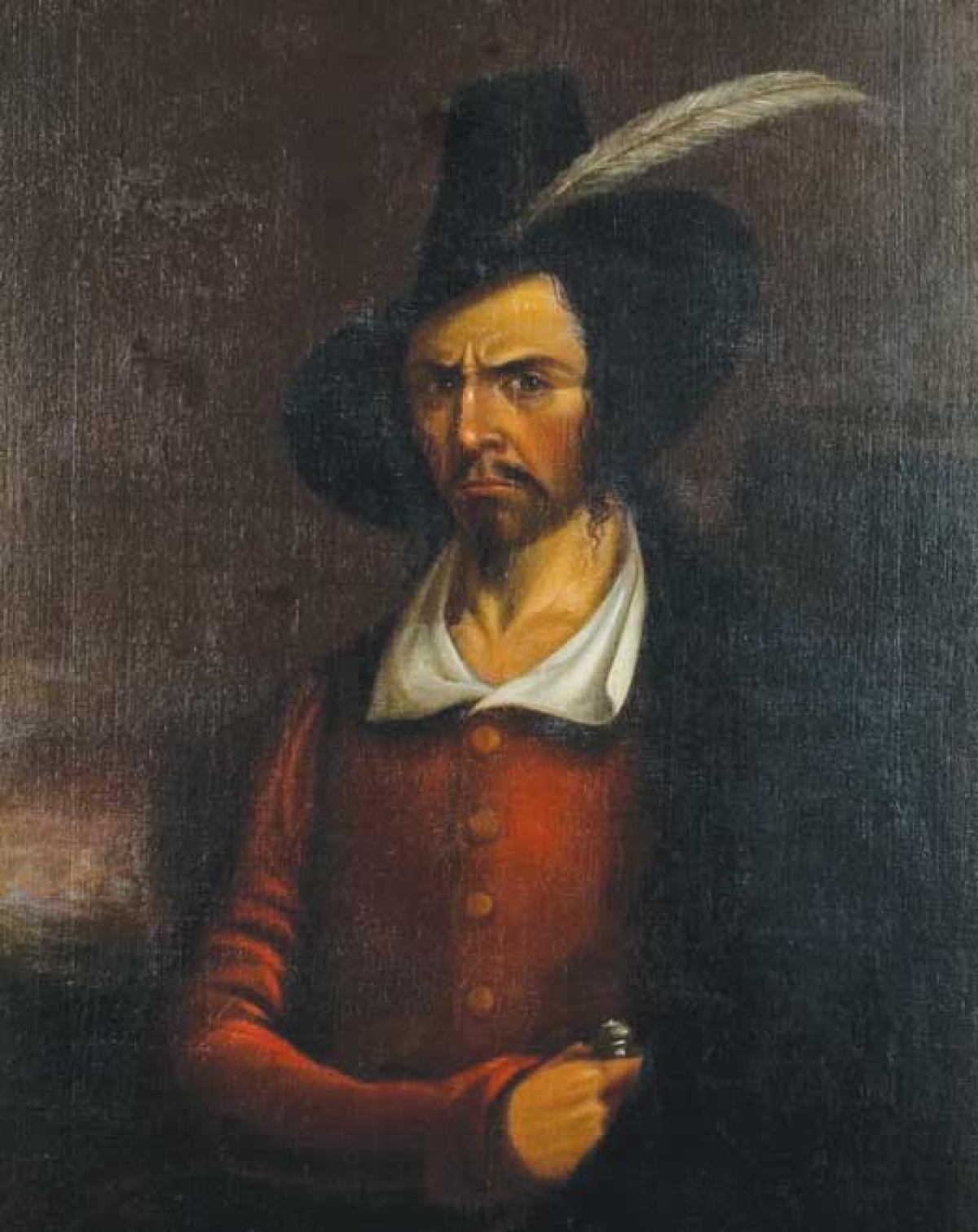When the Revenue Cutter Service ran down the new pride of Jean Lafitte’s pirate fleet, it marked the beginning of the end of a larcenous age.

Lafitte’s most famous portrait (anonymous, early 19th century) presents him as an ill man to cross. As the battle over the Brave moved to the courts, he carried his outrage and anger all the way to the President of the United States
It was more than just another routine capture for the two U.S. Revenue cutters 75 nautical miles northwest of the Dry Tortugas. The schooner they had bested after a short, sharp engagement on that afternoon of 30 August 1819 was none other than the Brave—newest addition to the fleet of the notorious pirate Jean Lafitte and his brother in maritime larceny, Pierre. But though the rapacious vessel was caught red-handed with prisoners and plunder from the nearby schooner Filomena, the Brave’s crew and her owners would argue that this was not mere piracy—but a blow struck for the cause of freedom.
Pirates? Au contraire, they would contend—privateers, legitimately operating out of Galveston, Texas Province, for revolutionary Mexico, preying on Spanish shipping in the name of the Mexican struggle for independence. And while the U.S. public had great sympathy for such activities by those sailing under the flags of revolutionary Spanish American nations, the U.S. government was exasperated, both with the widespread acts of piracy against its own ships and with the large-scale smuggling of cargoes from captured Spanish prizes into ports such as New Orleans.
1. David Head, Privateers of the Americas (Athens, GA: University of Georgia Press, 2015), 94.
2. Libel by the United States of America of the Armed Schooner Brave, Louisiana District Court, New Orleans, case #1450, 12 December 1819. RG 21, National Archives, Fort Worth, TX.
3. Secretary of the Treasury William Crawford to Collector of Customs Beverly Chew, 20 October 1819, Letters to and from the Collector at New Orleans October 11, 1803–April 11, 1833, in Correspondence of the Secretary of the Treasury with Collectors of Customs 1789–1833, RG 21, National Archives, 1956. Microcopy no. 178, roll 16, no. 84.
4. “Eighteen Seafaring Men Charged with Piracy,” Louisiana Gazette, 16 September 1819, http://louisdl.louislibraries.org/cdm/compoundobject/ collection/LWP/id/2240/rec/16.
5. Charles Francis Adams, ed., Memoirs of John Quincy Adams, vol. 4 (Philadelphia: J. B. Lippincott & Co, 1875), 21.
6. John Smith Kendall, “The Successors of Lafitte,” Louisiana Historical Quarterly, vol. 24, no. 2 (April 1941), 365.
7. Crawford to Chew, 14 February 1821, Letters, Microcopy no. 178, roll 16, nos. 348, 349.
8. Head, Privateers, 117.